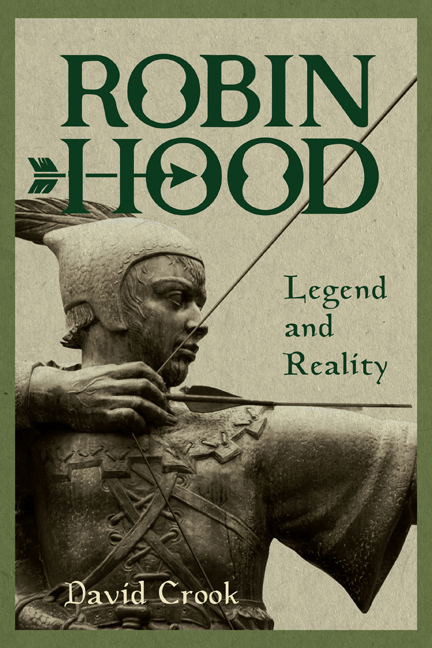Book contents
- Frontmatter
- Dedication
- Contents
- List of Maps and Illustrations
- Preface and Acknowledgements
- List of Abbreviations
- Introduction
- PART I THE LEGEND AND ITS INTERPRETERS
- Chapter 1 The Medieval Tales of Robin Hood
- Chapter 2 Chroniclers, Revellers, Playwrights and Antiquarians, c.1420–1765
- Chapter 3 Editors, the Folklorist and the Archivist, 1765–1889
- Chapter 4 Folklorists, Literary Scholars and Historians: Robin Hood in the Twentieth Century
- Chapter 5 The Robin Hood Places
- PART II OUTLAW AND EVILDOER OF OUR LAND: THE ORIGINAL ROBIN HOOD
- Chapter 6 The Robin Hood Names
- Chapter 7 Robin Hood and Criminality
- Chapter 8 Law and Disorder in Yorkshire, 1215–1225
- Chapter 9 The Sheriff, the Fugitive and the Civil Servant
- Conclusion
- Bibliography
- Index
Chapter 4 - Folklorists, Literary Scholars and Historians: Robin Hood in the Twentieth Century
Published online by Cambridge University Press: 16 September 2020
- Frontmatter
- Dedication
- Contents
- List of Maps and Illustrations
- Preface and Acknowledgements
- List of Abbreviations
- Introduction
- PART I THE LEGEND AND ITS INTERPRETERS
- Chapter 1 The Medieval Tales of Robin Hood
- Chapter 2 Chroniclers, Revellers, Playwrights and Antiquarians, c.1420–1765
- Chapter 3 Editors, the Folklorist and the Archivist, 1765–1889
- Chapter 4 Folklorists, Literary Scholars and Historians: Robin Hood in the Twentieth Century
- Chapter 5 The Robin Hood Places
- PART II OUTLAW AND EVILDOER OF OUR LAND: THE ORIGINAL ROBIN HOOD
- Chapter 6 The Robin Hood Names
- Chapter 7 Robin Hood and Criminality
- Chapter 8 Law and Disorder in Yorkshire, 1215–1225
- Chapter 9 The Sheriff, the Fugitive and the Civil Servant
- Conclusion
- Bibliography
- Index
Summary
By the end of the nineteenth century the battle lines of the debate about the origins of the Robin Hood legend had been drawn, and no previously unidentified early tales were found subsequently. Child, as editor of the texts of the tales, assigned them to literary creativity alone, the ‘ballad muse’, and his conclusion became the orthodox view of Robin Hood among literary scholars. Hunter's historical approach, searching for evidence indicating the existence of an original individual bearing the name of the outlaw in the records of medieval government and administration, receded in the wake of Child's criticisms. Perhaps as a result, professional historians paid very little attention to Robin Hood scholarship for many years, as they concentrated on political and constitutional history at a national level, largely ignoring the local and regional sources used by Hunter and his antiquarian predecessors, from William Dugdale (d. 1686) and Robert Thoroton (d. 1678) onwards, in compiling county histories. In the earlier twentieth century, some progress was made in the interpretation and understanding of the tales, but this was entirely within the province of the literary scholars. The most notable contribution was the detailed examination of the Gest published in 1909 by the Canadian scholar W. H. Clawson, which included no historical material. He analysed the Gest to determine how many different stories it contained, and to identify links to analogue tales. It was the only one of the early Robin Hood ballads to have received further detailed literary analysis between the time of Child and the late twentieth century. E. K. Chambers took a literary historical approach to the outlaw in an influential volume of the Oxford History of English Literature published in 1945, in a chapter covering ‘Popular Narrative Poetry and the Ballad’.
He was aware of the discovery of a reference to a ‘Gilbert Robynhod’ in Sussex in 1296, but thought it ‘very likely’ that the story of the outlaw ‘took its start’ from the Robin Hood imprisoned in Rockingham castle in 1354 while awaiting trial for breaking the forest law.
- Type
- Chapter
- Information
- Robin Hood: Legend and Reality , pp. 98 - 126Publisher: Boydell & BrewerPrint publication year: 2020



